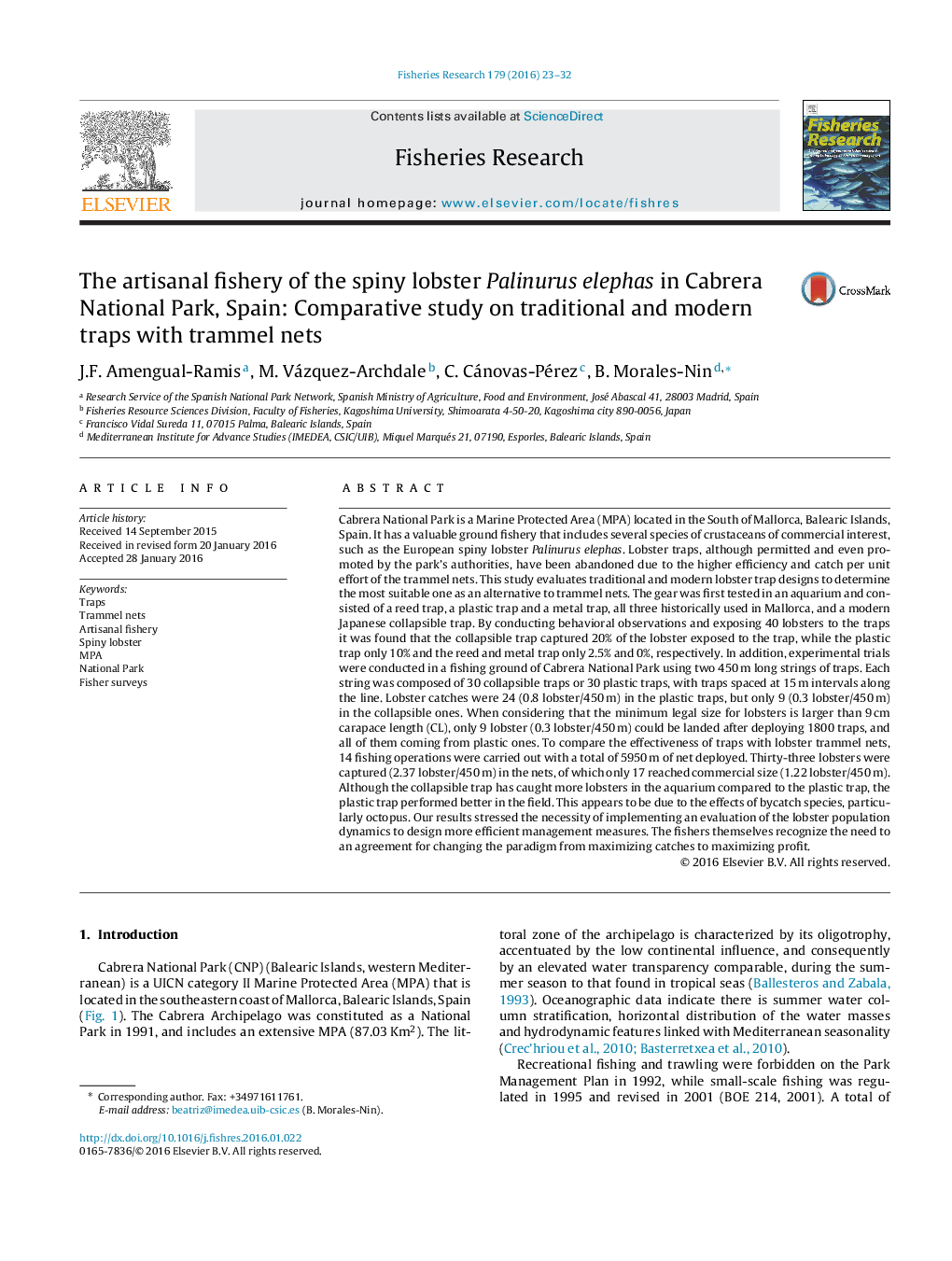| کد مقاله | کد نشریه | سال انتشار | مقاله انگلیسی | نسخه تمام متن |
|---|---|---|---|---|
| 6385326 | 1626790 | 2016 | 10 صفحه PDF | دانلود رایگان |
عنوان انگلیسی مقاله ISI
The artisanal fishery of the spiny lobster Palinurus elephas in Cabrera National Park, Spain: Comparative study on traditional and modern traps with trammel nets
ترجمه فارسی عنوان
ماهیگیری غیرمجاز از نخل خرچنگ نخل پیلینوروس الیاف در پارک ملی کابرارا، اسپانیا: مطالعه مقایسه ای در تله های سنتی و مدرن با شبکه های سقفی
دانلود مقاله + سفارش ترجمه
دانلود مقاله ISI انگلیسی
رایگان برای ایرانیان
کلمات کلیدی
موضوعات مرتبط
علوم زیستی و بیوفناوری
علوم کشاورزی و بیولوژیک
علوم آبزیان
چکیده انگلیسی
Cabrera National Park is a Marine Protected Area (MPA) located in the South of Mallorca, Balearic Islands, Spain. It has a valuable ground fishery that includes several species of crustaceans of commercial interest, such as the European spiny lobster Palinurus elephas. Lobster traps, although permitted and even promoted by the park's authorities, have been abandoned due to the higher efficiency and catch per unit effort of the trammel nets. This study evaluates traditional and modern lobster trap designs to determine the most suitable one as an alternative to trammel nets. The gear was first tested in an aquarium and consisted of a reed trap, a plastic trap and a metal trap, all three historically used in Mallorca, and a modern Japanese collapsible trap. By conducting behavioral observations and exposing 40 lobsters to the traps it was found that the collapsible trap captured 20% of the lobster exposed to the trap, while the plastic trap only 10% and the reed and metal trap only 2.5% and 0%, respectively. In addition, experimental trials were conducted in a fishing ground of Cabrera National Park using two 450Â m long strings of traps. Each string was composed of 30 collapsible traps or 30 plastic traps, with traps spaced at 15Â m intervals along the line. Lobster catches were 24 (0.8 lobster/450Â m) in the plastic traps, but only 9 (0.3 lobster/450Â m) in the collapsible ones. When considering that the minimum legal size for lobsters is larger than 9Â cm carapace length (CL), only 9 lobster (0.3 lobster/450Â m) could be landed after deploying 1800 traps, and all of them coming from plastic ones. To compare the effectiveness of traps with lobster trammel nets, 14 fishing operations were carried out with a total of 5950Â m of net deployed. Thirty-three lobsters were captured (2.37 lobster/450Â m) in the nets, of which only 17 reached commercial size (1.22 lobster/450Â m). Although the collapsible trap has caught more lobsters in the aquarium compared to the plastic trap, the plastic trap performed better in the field. This appears to be due to the effects of bycatch species, particularly octopus. Our results stressed the necessity of implementing an evaluation of the lobster population dynamics to design more efficient management measures. The fishers themselves recognize the need to an agreement for changing the paradigm from maximizing catches to maximizing profit.
ناشر
Database: Elsevier - ScienceDirect (ساینس دایرکت)
Journal: Fisheries Research - Volume 179, July 2016, Pages 23-32
Journal: Fisheries Research - Volume 179, July 2016, Pages 23-32
نویسندگان
J.F. Amengual-Ramis, M. Vázquez-Archdale, C. Cánovas-Pérez, B. Morales-Nin,
